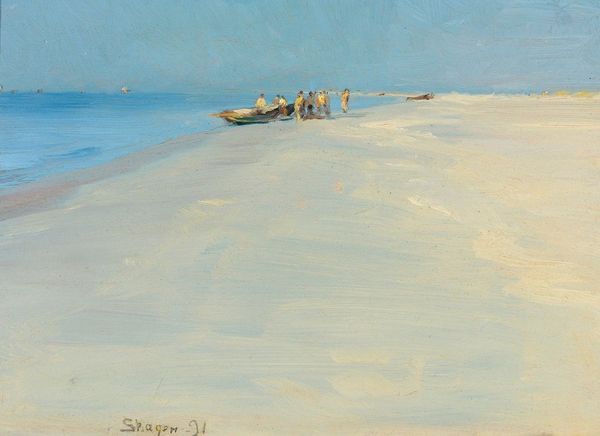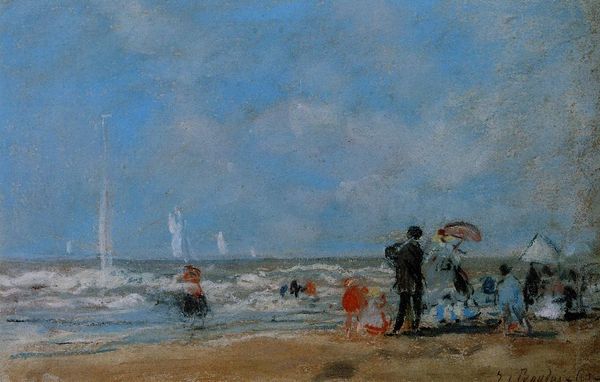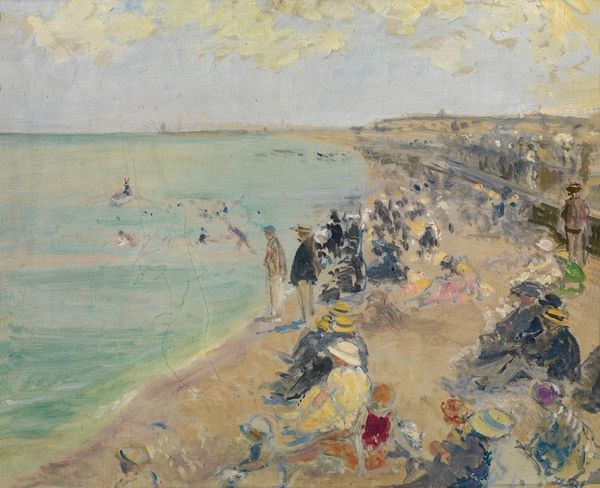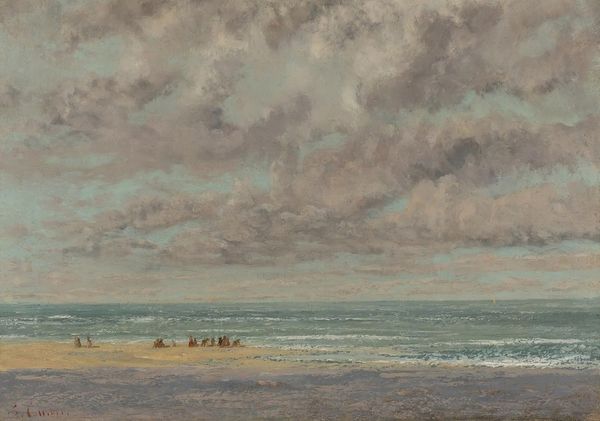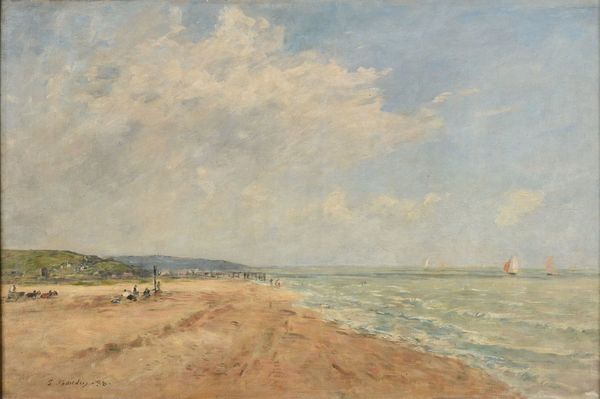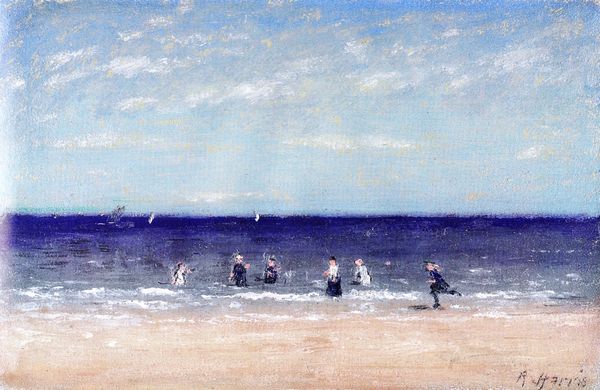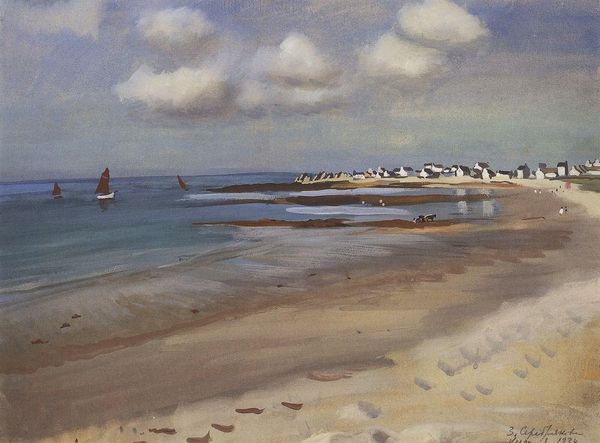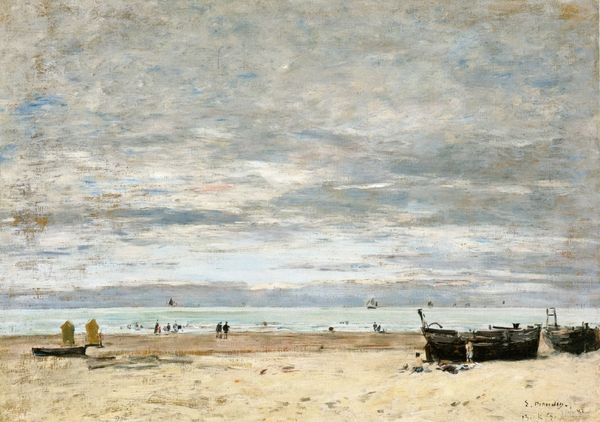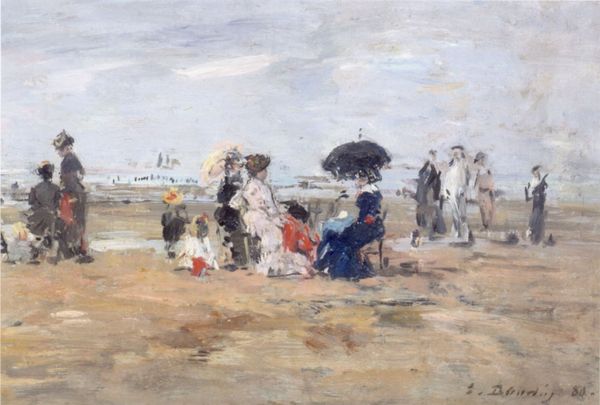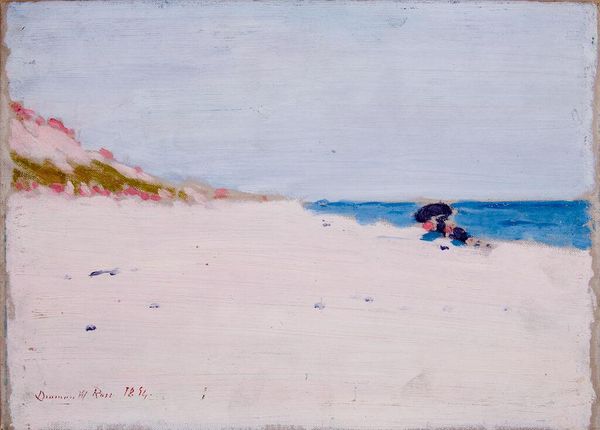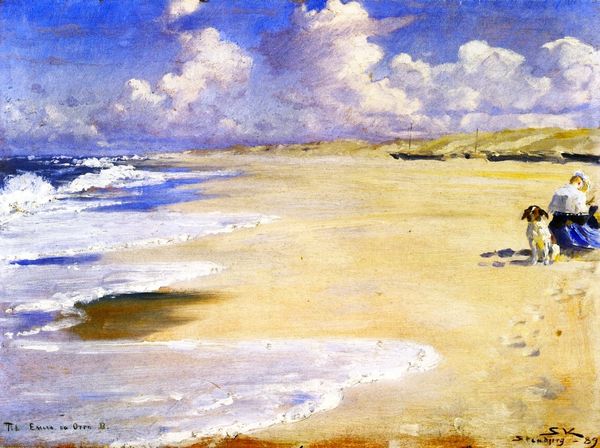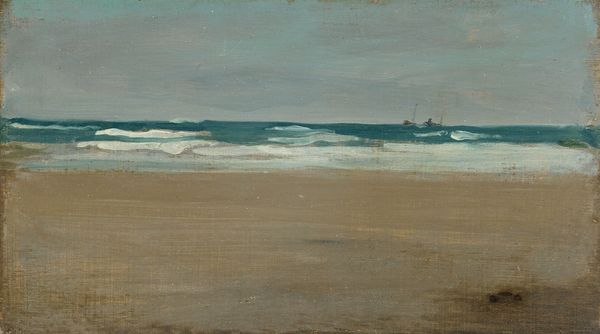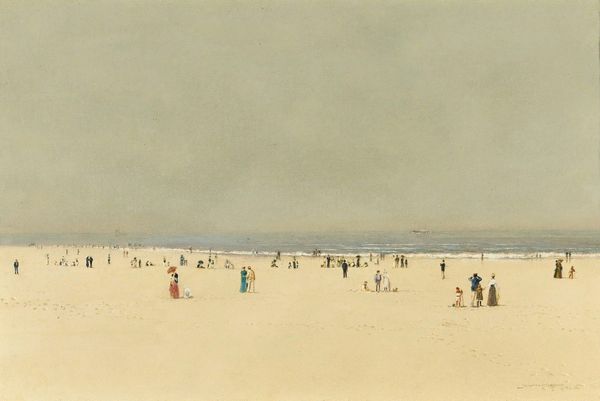
Copyright: Public domain
Curator: Edward Henry Potthast's "Rockaway Beach," painted circa 1910, presents a bustling seaside scene rendered in oil on canvas. Editor: My first impression is of muted light. There's a definite layering of grey and white in the sky that softens the entire composition. It almost feels like a faded memory of a summer's day. Curator: Potthast, a notable figure in American Impressionism, captured the leisure activities of the burgeoning middle class. The painting documents a pivotal shift in urban culture where seaside vacations were becoming increasingly accessible, a narrative clearly seen here. Editor: The brushwork is quite loose, wouldn't you agree? See how the figures are suggested rather than meticulously rendered, almost dissolving into the landscape? It creates a wonderful sense of movement. Curator: Precisely. Potthast aimed to capture the essence of the scene. He observed these recreational spaces as vibrant sites of social mixing, indicative of turn-of-the-century social reforms, designed to accommodate a wider populace. This ties into the larger history of Rockaway Beach as a public destination. Editor: If we analyze the composition alone, the horizon line isn't a strong focal point. The eye wanders amongst the array of people and then naturally goes back to that hazy, dominant sky, it's quite intriguing and very atmospheric. Curator: It certainly pulls focus, doesn't it? It makes the overall artwork all the more indicative of a broader democratization of leisure. Editor: A rather nice impressionistic interplay of brushstrokes and atmosphere, capturing a transient, yet charming moment on canvas. Curator: Indeed, Potthast gifts us a fascinating visual artifact embedded with evolving societal values and changing cultural norms.
Comments
No comments
Be the first to comment and join the conversation on the ultimate creative platform.
